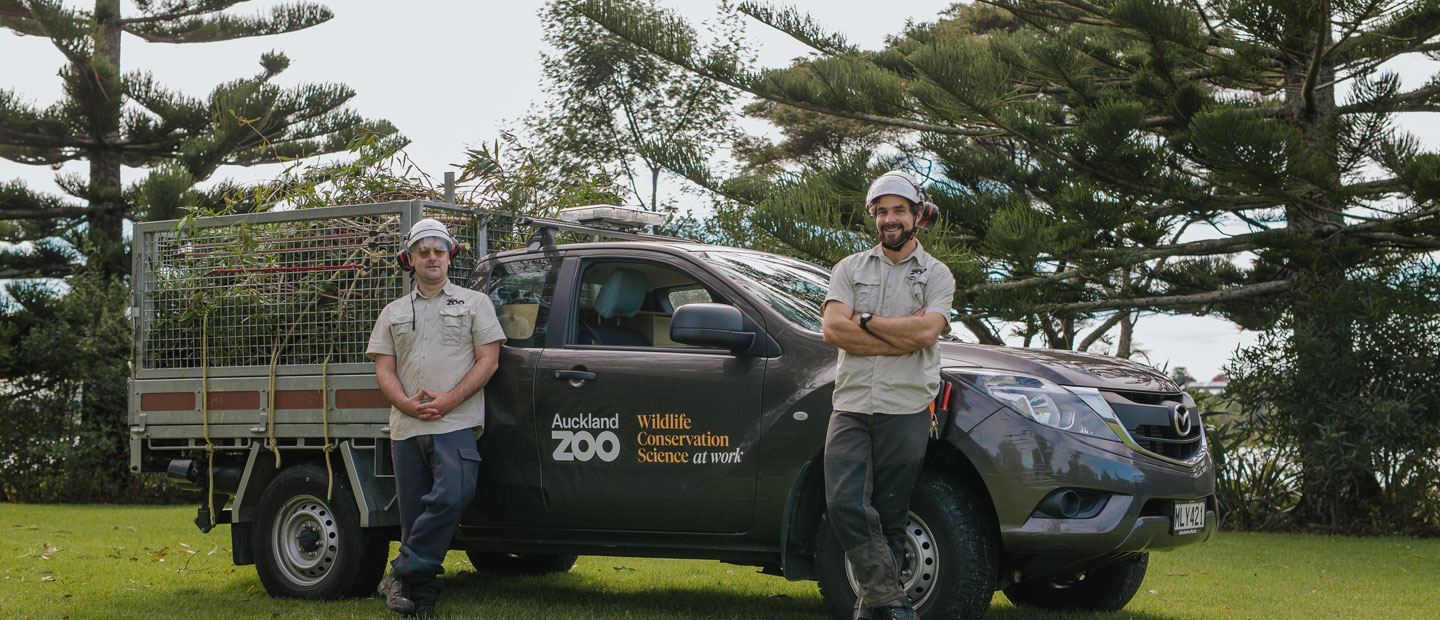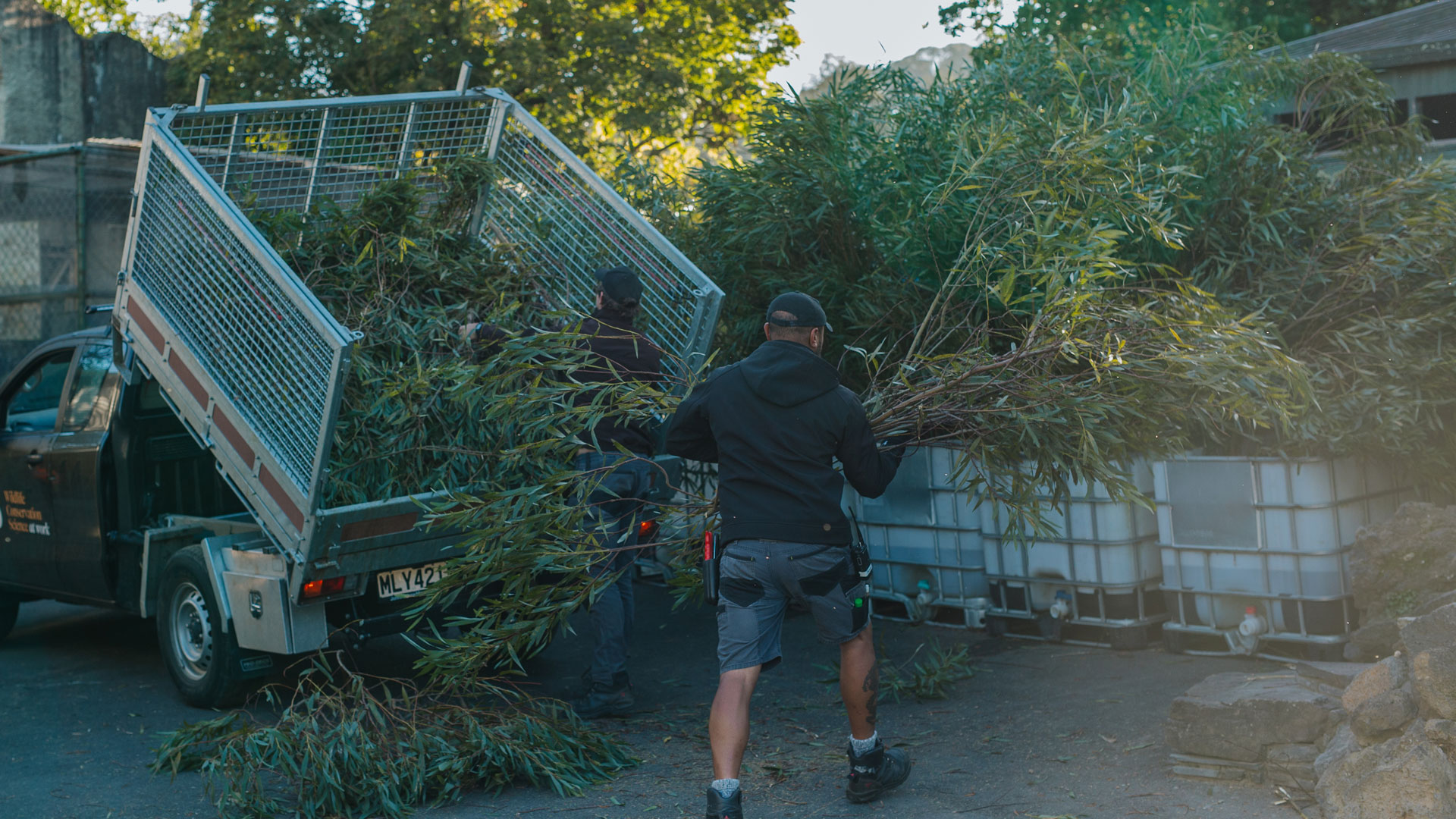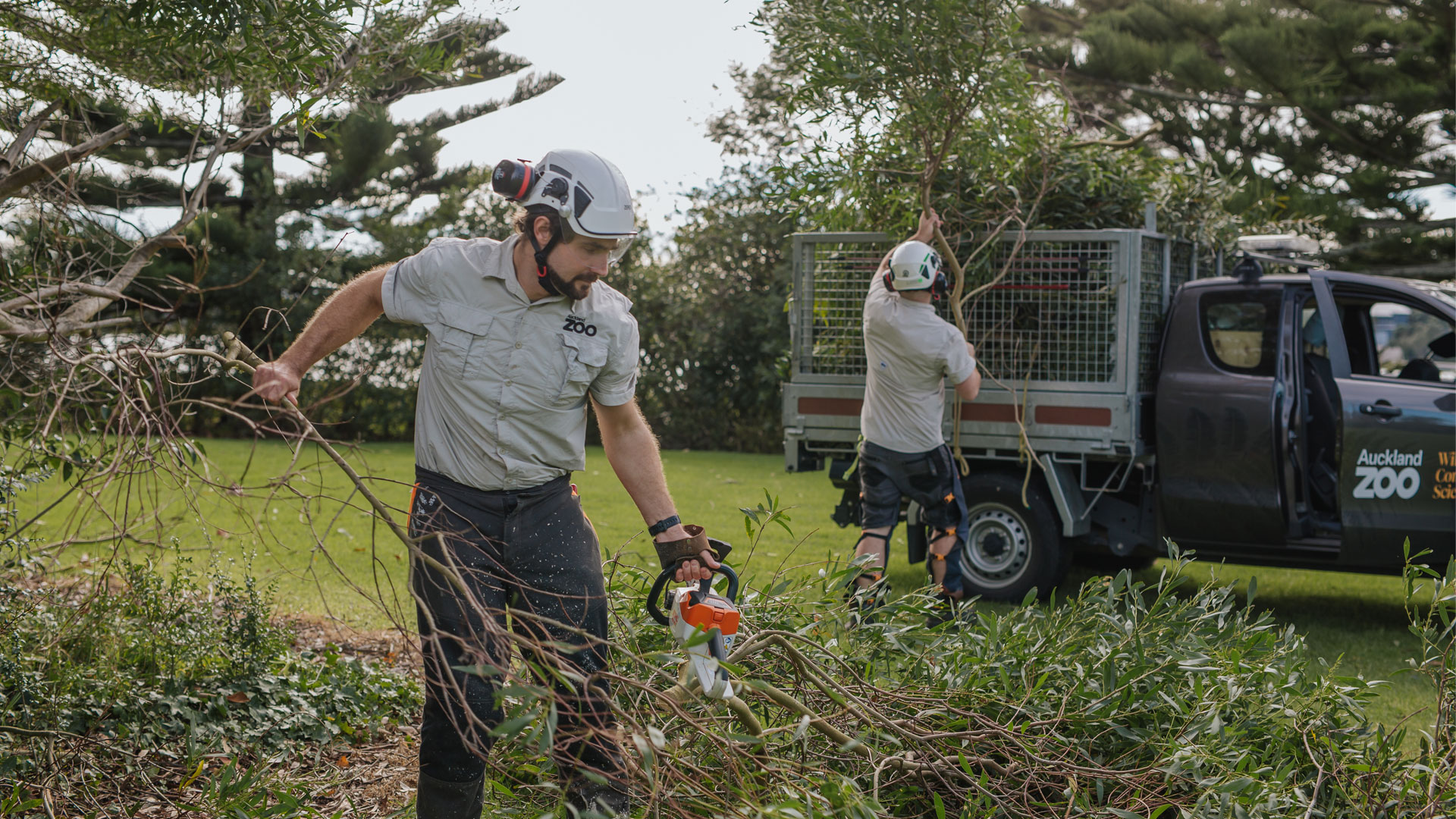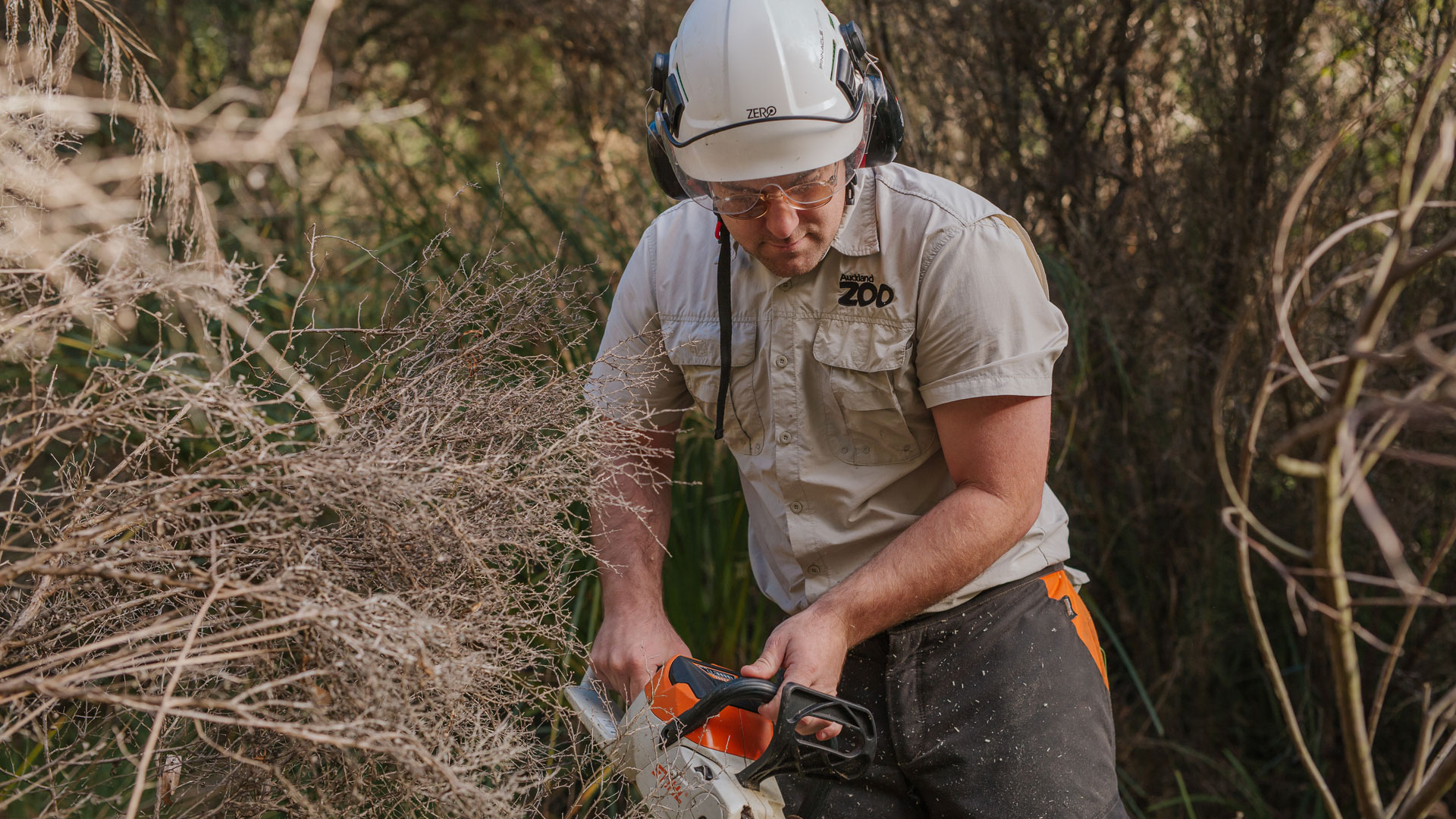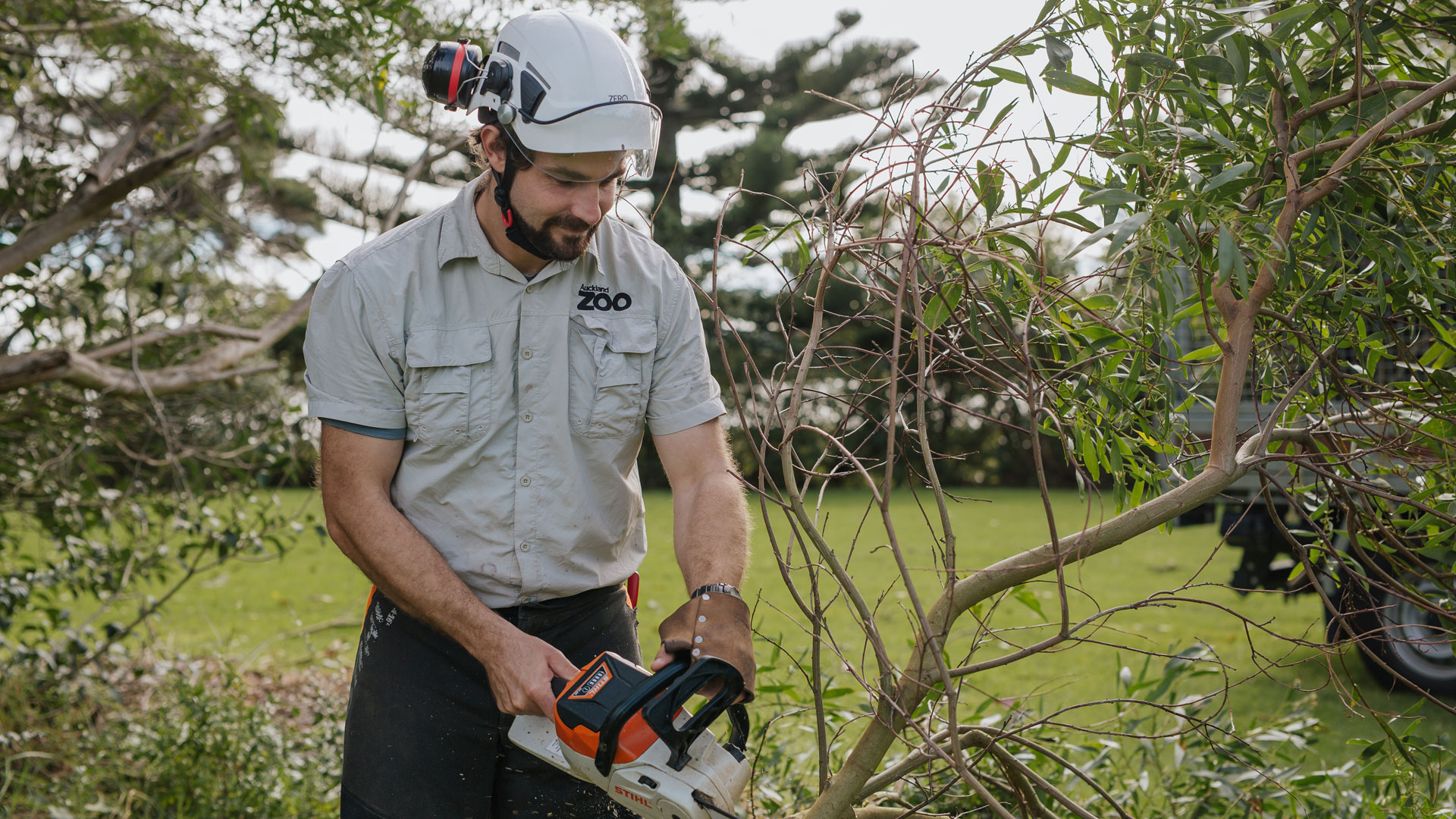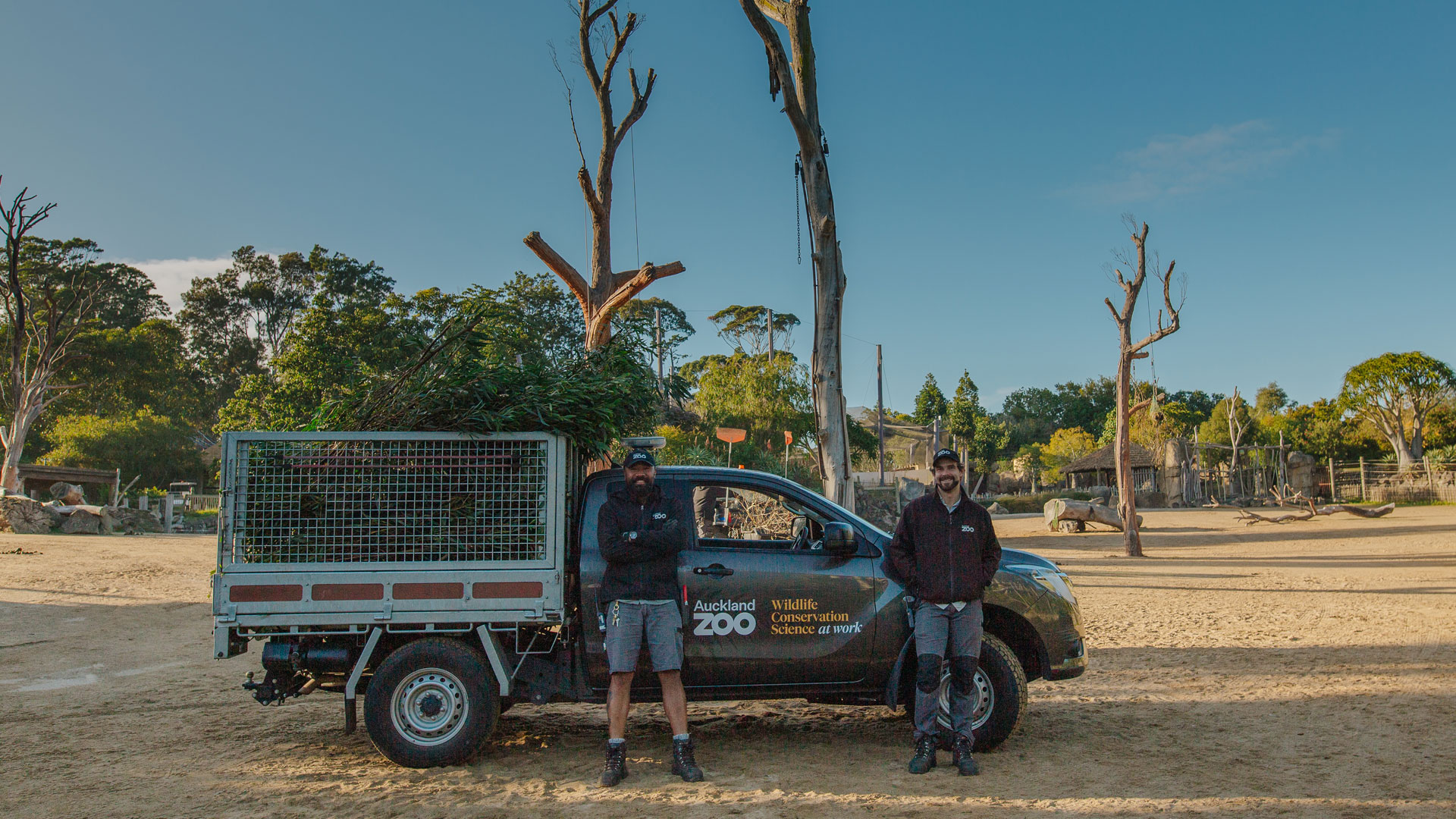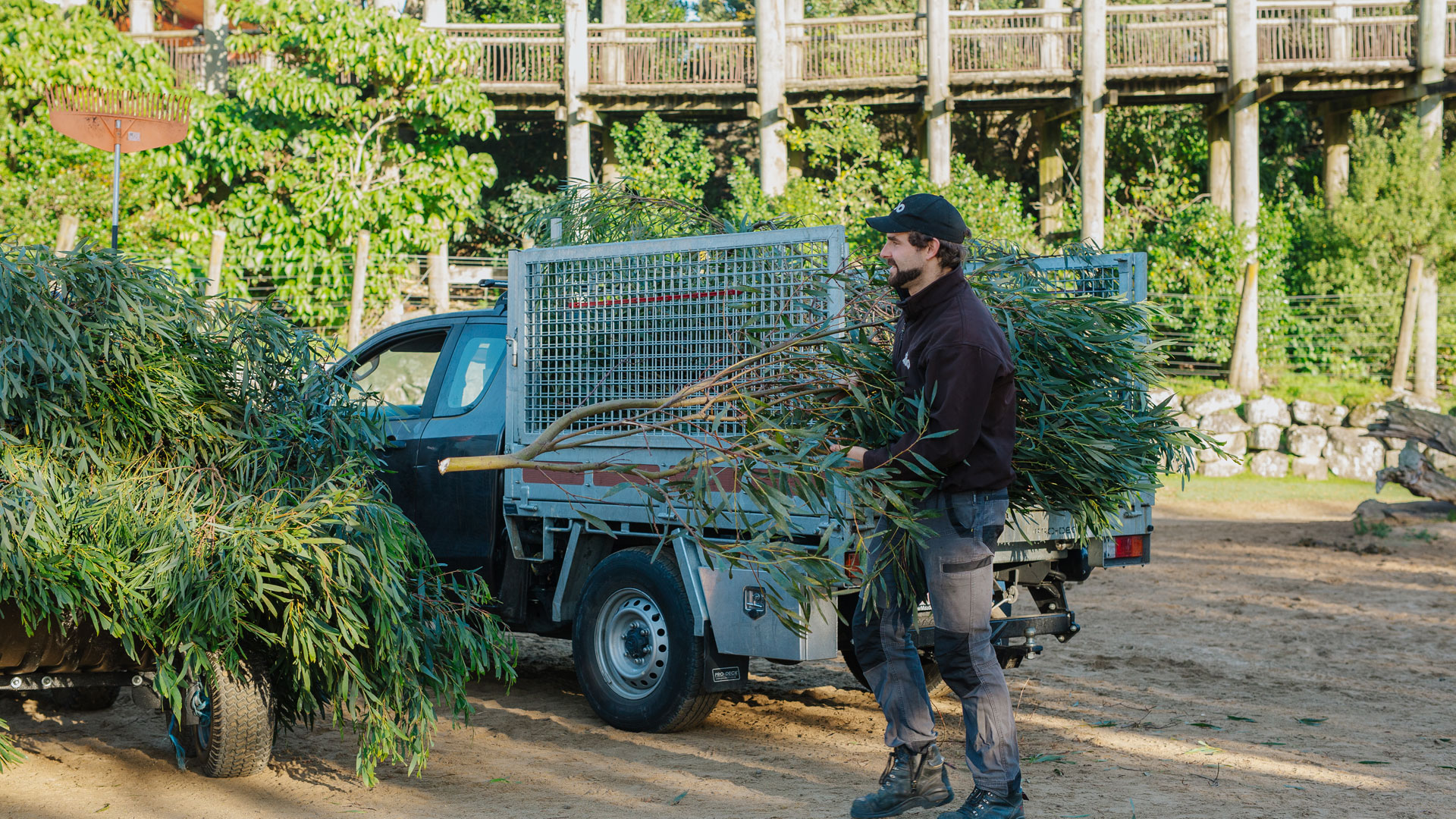One of the things you may not know about our incredibly dedicated Auckland Zoo whānau, is that we have a specialist ‘Browse’ Team. Browse is what we refer to as vegetation or foliage for our animals to eat or enrich their environment. For Auckland Zoo, this equates to about 40 cubic metres of branches a week, or even try to picture 20 ute-loads of densely-packed branches, squeezed in tight and held down by bungee cords. Being high in fibre, browse is an important, nutritious part of an animals’ diet. But equally as important, browse is enriching and encourages natural behaviour such as nesting, perching or gnawing.
There’s a lot to collect, widely ranging from Auckland Council parks, some generous residents’ homes, and our own browse plantations. It’s a bit of a mission, and Sean, Ritchie and Dion are the three vital components of this busy team! When asked how it all works, Sean explains it’s a bit of a logistical challenge.
“What we have set up is a database of preferences from animal teams with their browse requirements. It’s a mixture of seeing what’s on offer from around Auckland from both council parks we have agreements in place with, and our own plantations.”
Sean explains the largest source of browse comes from plantations that were set up by the browse team many years ago as a collaboration of sorts between Auckland Council parks and Auckland Zoo. Having a reliable population of browse – mainly Coprosma, tree lucerne, and Pseudopanax – is a really sustainable way to feed the animals year-round. Although, that is only the beginning! Different times of year require the team to think outside the box, ensure variety and in the months of summer also be able to utilise deciduous varieties. The other main source is from places where there is a mutually beneficial agreement. For instance, weed species like Acacia grow in parts of Auckland, like the Waikumete Cemetery, which would otherwise be chipped and sent to GreenWaste. But the really interesting stuff, the morsels of hibiscus Monstera and the exciting variety, comes from our incredibly generous nearby residents reaching out!
A keen plant enthusiast, Sean began his career by studying a Bachelor’s degree in ecology, then working in plant nurseries and also having the opportunity to undertake some ecological restoration work. Sean joined Auckland Zoo five years ago, first in the Horticulture Team, and unbeknownst to him, honing his pruning skills and discovering that is something he really enjoyed. When the opportunity came up to lead the Browse Team, Sean decided it was the perfect next step.
“Being an ecologist, I have a really holistic view of animals and the environment, but realistically the plant side of the Zoo was what drove me to work here. We’re essentially a big botanical garden with some really impressive species you can’t find nearly anywhere else in New Zealand. I’ve always been interested in the biological world, potentially influenced by my love for David Attenborough documentaries.”
There aren’t too many zoos around the world that provide regular fresh browse for animals seven days a week, nor at the quantity Auckland Zoo provides. Sean loves that about his work, and being able to achieve something important every day.
“Auckland Zoo puts the needs of the animals first, putting nutrition as a top priority. I also enjoy that fact that there is so much conservation work that goes on here. I enjoy working somewhere that really values these things, and where everyone gets to contribute to something so vital in their own way.”
Afterall, Sean’s wife Sarah is on the Ectotherm Team, a team that are currently housing an entire population of skink that were essentially saved through the joint efforts of Auckland Zoo and the Department of Conservation (DOC) from a natural disaster. Not to mention the other 100s of hours our animal care staff regularly contribute to conservation field work.
Providing exceptional animal nutrition is a priority at Auckland Zoo, and it is taken seriously! Browse provides an important source of nutrition, and specifically – fresh – browse is much more nutritionally valuable, which is why it’s something we are proud to source for our animals every day of the week. But behaviourally speaking, it’s also about the opportunity it provides some animals to eat at height, and important for nesting, perching, gnawing and hiding in, important natural behaviours contributing to ensuring positive welfare.
Talking about the big cities we often find ourselves living in, like Auckland, Sean tells us about the importance of local conservation and revegetation.
“There’s more and more local conservation groups we can contribute to. Revegetation, especially in terms of native species, are important for getting native wildlife back into urban centres. I know not everything can live in an urban environment, but certainly species like tūī have been shown to even thrive here. I think it’s important to make sure the right native planting is done within cities and farmland. If we can get more native planting into waterways, people’s backyards, esplanades, and get rid of weeds it would be a huge start. If you’re talking about animal conservation, nine times out of 10, if you look after the environments these animals live in, they’re going to thrive. Not to mention, if we all did this in our own backyards, that is like 80% of the work done!”
The team is always on the lookout for interesting varieties of browse, so if you have the likes of spray-free banana palm, puka or Monstera growing in your backyard, please get in touch at browse@aucklandzoo.co.nz and we would be happy to come collect it for a fresh meal for one of our zoo whānau.


